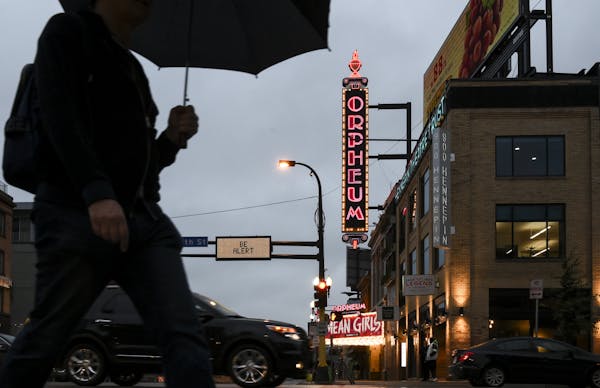Violent crime dropped once again in Minnesota last year, continuing a decadelong trend that's made the state and its metro area among the nation's safest.
In 2018, the collective rate of homicide, robbery, rape and aggravated assault declined by 8% statewide from 2017, according to Uniform Crime Reporting data released by the FBI this week. This marks a 33% decline from the mid-'90s crime peak and a 23% dip from an uptick in 2006.
Minnesota's crime rates, calculated per 100,000 people, track with decades of declining violence in America, though Minnesota's rates are consistently lower than the nation's average, according to the data.
"We've been at a long-term downtrend since 1991," said Ames Grawert, who studies crime trends as senior counsel for the Brennan Center's Justice Program.
Grawert said that some years, and some pockets of the country, have brought troubling jumps in violence that shouldn't be trivialized. However, he said, "it would be incorrect to say we're standing on the brink of a violent crime wave, as some politicians like to claim."
The UCR report is widely considered the most reliable measurement of American crime trends. Since 1930, law enforcement agencies across the country have contributed to the report, tallied by the FBI and published since 1958. More than 18,000 agencies currently participate in the data collection.
The 2018 report shows Minnesota's largest cities are also in a period of declining violence. The Minneapolis Police Department reported a 26% drop in violent crime compared with 2017, according to the data, making 2018 one of the safest years in decades in Minneapolis. St. Paul, also in a period of relatively low crime, reported a slighter 3% decline.
The Twin Cities metro area is also one of the safest places in America compared with other metro areas with populations of more than 1 million, according to the data.
The UCR report comes as high-profile incidents of robberies and assaults have occurred in the Twin Cities. The 2019 statistics are not part of the report, and it's not yet clear if this year will mark a statistically significant reversal from last year.
Rape reports increasing
One metric of violent crime that has been bucking the trend: sexual assault reports.
From 2014 to 2018, rape reports increased 20% in Minnesota, according to the data.
Advocates say this trend may reflect an increase in reporting, not necessarily a surge in assaults.
"It's hard to say if sexual violence is actually increasing," said Ashley Sturz-Griffith, a support specialist for the Minnesota Coalition Against Sexual Assault. "I would tend to look at that and think, what that means is people are just more willing to report to law enforcement."
This could be driven by a culture change around sexual assault in Minnesota and around the country, catalyzed by victims sharing their stories as part of the #MeToo movement. These stories have also brought to light incidents that don't fall into the stereotypical definition of sexual assault, Sturz-Griffith said. "And I think more people are starting to identify that what happened to them is sexual violence, and it is a crime."
Data editor MaryJo Webster contributed to this report.

Lotto America player in Minnesota hits $3.1M jackpot

Star Tribune adds Kavita Kumar, Melissa Wind to news organization's leadership

An infamous heist put this North Woods town in the global spotlight. Nervous breakdowns and Hollywood deals ensued.

6 Edina residents explain why they're running for the Hennepin County Board

